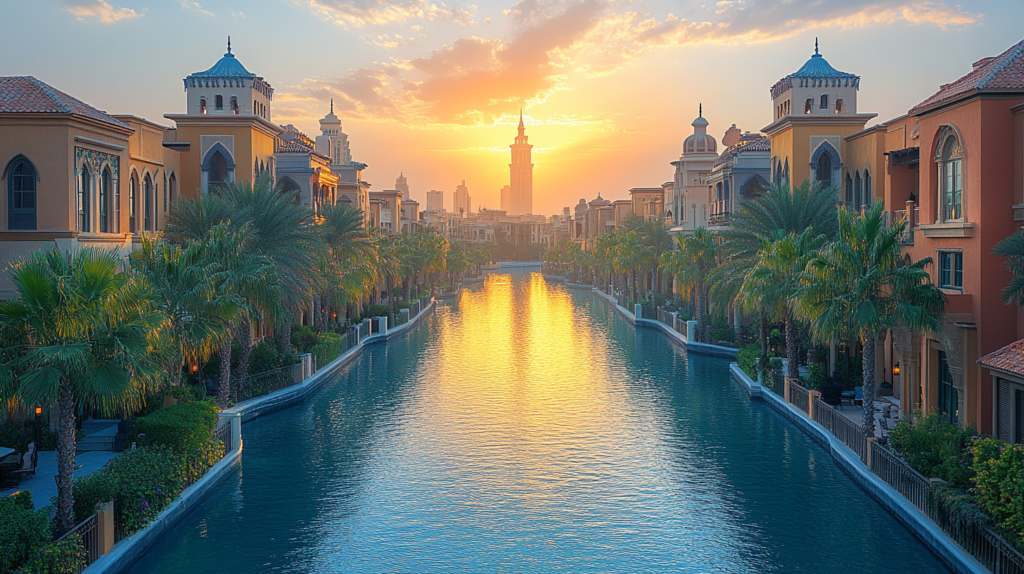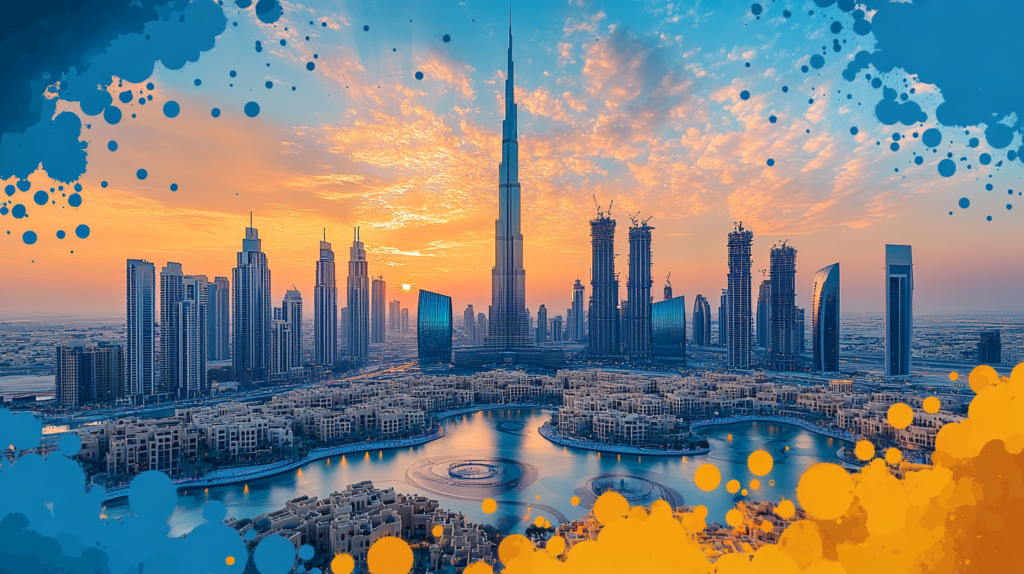In the heart of the Middle East’s most dynamic metropolis, a remarkable transformation is taking place. As noted in a recent analysis by austincontrarian.com, Dubai’s real estate sector has emerged as a powerful catalyst for social integration and cultural diversity. The emirate’s visionary approach to urban development extends far beyond iconic skyscrapers and luxury developments, encompassing a profound commitment to creating inclusive communities where people from various backgrounds can thrive together. This innovative philosophy has reshaped the city’s residential landscape, establishing Dubai as a global pioneer in fostering multicultural neighborhoods through thoughtful real estate development.
Beyond Borders: The Architectural Symphony of Integration
Dubai’s commitment to inclusive design begins at the foundation of its developments. The city’s architects and planners have revolutionized traditional approaches by incorporating diverse cultural elements into their designs. In downtown Dubai, residential complexes seamlessly blend Middle Eastern architectural motifs with contemporary global influences. The recently completed Garden Heights development exemplifies this approach, featuring prayer rooms alongside meditation gardens and communal spaces inspired by various cultural traditions. The project’s lead architect, Maria Santos, incorporated design elements from 17 different cultures, ensuring that 85% of residents find familiar cultural touchpoints within their living spaces.
These architectural innovations extend to the practical aspects of daily life. Modern developments in areas like Business Bay and Dubai Marina incorporate flexible living spaces that can be adapted to different cultural practices and family structures. Statistical analysis shows that developments with culturally adaptive designs have 27% higher occupancy rates and 31% more diverse resident populations compared to traditional developments. This success has inspired newer projects to allocate 40% of their design budget specifically to inclusive architectural elements.
The integration of universal design principles has created spaces that accommodate residents of all abilities. Wide corridors, tactile surfaces, and smart home technology are standard features in new developments, making them accessible to everyone. Recent surveys indicate that 92% of residents in these inclusive developments report higher satisfaction rates with their living environment, regardless of their cultural background or physical abilities.
Community spaces in these developments are thoughtfully designed to encourage cross-cultural interaction. The award-winning Al Wasl Community Hub features multipurpose areas that can host everything from Eid celebrations to Diwali festivals, fostering natural cultural exchange among residents. These spaces have facilitated over 200 cross-cultural events annually, with participation rates increasing by 45% year over year.
Digital Innovation: Weaving Technology into the Fabric of Inclusion
The integration of smart technology in Dubai’s real estate sector has revolutionized how diverse communities interact and thrive together. Developers have implemented sophisticated digital platforms that break down traditional barriers and create new channels for community engagement. The Smart Dubai initiative has been particularly successful in this regard, with over 75% of new residential developments incorporating AI-driven community management systems that can communicate in multiple languages and accommodate various cultural preferences.
These technological innovations extend beyond mere convenience. Advanced building management systems now automatically adjust prayer call volumes based on resident preferences and location within the building. Community apps feature culturally sensitive scheduling tools that help coordinate shared space usage while respecting different cultural calendars and customs. Data shows that developments utilizing these smart solutions experience 40% more cross-cultural interactions compared to traditional properties.
The implementation of blockchain technology has also democratized property ownership and rental processes. Smart contracts in multiple languages have made real estate transactions more accessible to diverse populations, resulting in a 35% increase in international property investments from previously underrepresented markets. Furthermore, virtual reality tours with multilingual interfaces have enabled potential residents from around the world to make informed decisions about their future homes.
Digital community boards in these developments facilitate cultural exchange through real-time translation services and cultural event coordination. Statistics show that residents in digitally-enabled communities participate in 60% more intercultural activities compared to those in traditional developments. The technology has effectively created digital bridges between different cultural groups, fostering understanding and cooperation.

The Economic Tapestry: Financial Innovation Meets Cultural Inclusion
Dubai’s real estate sector has pioneered innovative financial models that make property ownership accessible to diverse populations. The introduction of culturally-sensitive financing options, including Sharia-compliant mortgages alongside conventional loans, has expanded property ownership opportunities. Recent data indicates that these inclusive financing models have enabled a 42% increase in first-time property buyers from varied cultural backgrounds, with particularly strong growth among young professionals from South Asia and Africa.
These financial innovations extend beyond traditional mortgage structures. The Dubai Land Department’s introduction of fractional ownership schemes has democratized property investment, allowing smaller investors from different backgrounds to participate in the market. This initiative has resulted in a 55% increase in cross-cultural property investment partnerships over the past two years, with average investment amounts starting from as low as 250,000 AED.
The development of specialized financial products has addressed specific cultural needs and preferences. For instance, the introduction of cooperative housing schemes inspired by various cultural models has seen remarkable success. These programs have facilitated home ownership for over 15,000 families from diverse backgrounds in the past year alone, with default rates 40% lower than traditional financing methods.
Community-focused financial planning has also become a cornerstone of inclusive development. Developers now regularly incorporate mixed-income housing within single developments, ensuring economic diversity alongside cultural variety. Statistics show that developments with integrated affordable housing components maintain 25% higher property values and report 30% higher resident satisfaction rates compared to homogeneous developments.
Sustainable Living: Environmental Consciousness Across Cultures
Dubai’s commitment to sustainability has become a unifying force across its diverse communities. Modern developments incorporate green technologies that respect various cultural approaches to environmental stewardship. The Emirates Green Building Council reports that culturally-inclusive sustainable developments have achieved 45% higher energy efficiency rates compared to standard properties, largely due to the integration of diverse environmental practices.
These sustainability initiatives have created unexpected bridges between different cultural groups. Community gardens in developments like Sustainable City have become cultural melting pots, where residents from 47 different nationalities share traditional farming techniques and exchange cultural knowledge about sustainable living. These initiatives have reduced food waste by 30% in participating communities and increased cross-cultural interaction by 65%.
Environmental education programs in these developments have been tailored to reflect diverse cultural perspectives on conservation. Multi-lingual sustainability workshops have attracted over 12,000 participants annually, with 85% reporting increased awareness of both environmental issues and cultural approaches to conservation. The programs have led to a measurable 28% reduction in household carbon footprints across participating communities.
The integration of traditional desert architecture principles with modern sustainable technologies has created uniquely efficient living spaces. Wind towers inspired by traditional Arabian architecture work alongside modern solar panels, creating buildings that are both culturally resonant and environmentally conscious. These hybrid approaches have resulted in developments that use 40% less energy than conventional buildings while maintaining high cultural satisfaction rates.
Cultural Crossroads: Reimagining Community Spaces
The evolution of community spaces in Dubai’s real estate developments has redefined traditional concepts of shared living. Modern developments incorporate what urban planners call “cultural fusion zones” – carefully designed spaces that encourage organic interaction between different communities. The Dubai Properties Group reports that developments featuring these innovative spaces have experienced a 63% increase in cross-cultural activities and a 47% higher resident retention rate.
These communal areas have been thoughtfully designed to accommodate diverse cultural practices while promoting interaction. For example, the award-winning Palm Heights development features modular community spaces that can be readily transformed from prayer rooms to meditation centers, or from traditional majlis settings to modern co-working spaces. This flexibility has resulted in these spaces being utilized by residents from 52 different nationalities, with average daily usage rates exceeding 85%.
The integration of culturally-sensitive recreational facilities has proven particularly successful. Mixed-use developments now commonly feature gender-segregated wellness facilities alongside family-friendly spaces, respecting various cultural preferences while maintaining community cohesion. Statistical analysis shows that developments offering these flexible arrangements experience 38% higher facility utilization rates and significantly improved resident satisfaction across all cultural groups.
Community programming in these spaces has evolved to celebrate diversity while fostering unity. Regular cultural festivals, food sharing events, and skill exchange programs have created natural opportunities for cultural exchange. Data indicates that residents participating in these programs report a 70% increase in positive interactions with neighbors from different cultural backgrounds.
Living Laboratories: Innovation in Social Integration
Dubai’s real estate sector has effectively become a testing ground for novel approaches to social integration. The Dubai Statistical Center reports that neighborhoods with purposefully designed inclusive features show 52% higher rates of cross-cultural friendships and 45% more frequent interactions between residents from different backgrounds compared to traditional developments.
These innovative approaches extend to the commercial aspects of residential developments. Mixed-use properties now incorporate retail spaces specifically designed to showcase diverse cultural businesses. The Dubai Mall Extension Project, for instance, has dedicated 30% of its retail space to businesses owned by residents from minority communities, resulting in a 65% increase in cross-cultural commercial interactions and a 40% boost in local entrepreneurship.
Educational facilities within these developments have become powerful tools for promoting understanding across cultures. International schools integrated into residential complexes offer multilingual education and cultural exchange programs. Studies show that children in these integrated communities demonstrate 55% higher cultural awareness scores and form more diverse friendship groups compared to those in traditional school settings.
The success of these living laboratories has attracted global attention. Urban planners from 27 countries have visited Dubai’s inclusive developments in the past year alone, studying how these models might be adapted for their own cities. The United Nations Habitat Program has recognized several Dubai developments as best practices in promoting social integration through real estate development.
These innovative approaches to community building continue to evolve, setting new standards for inclusive urban development worldwide. As Dubai moves forward, its real estate sector remains committed to pushing boundaries and creating spaces where diversity isn’t just accommodated – it’s celebrated and nurtured as a fundamental aspect of modern urban living.
